1.2.8: The Cooking Techniques- Dry Heat
- Page ID
- 64428
Dry Heat:
Dry heat food preparation do not utilize water to cook foods and therefore are able to reach hotter temperatures.
Dry heat methods include:
- Roasting
- Broiling
- Grilling
- Barbecuing
- Frying
- Baking
Roasting
Roasting is a cooking method that uses dry heat. Hot air envelops the food, cooking it evenly on all sides with temperatures of at least 300 °F from an open flame, oven, or other heat source. Roasting can enhance flavor through caramelization and Maillard browning on the surface of the food. Roasting uses indirect, diffused heat (as in an oven), and is suitable for slower cooking of meat in a larger, whole piece. Meats and most root and bulb vegetables can be roasted. Any piece of meat, especially red meat that has been cooked in this fashion is called a roast. Meats and vegetables prepared in this way are described as "roasted", e.g., roasted chicken or roasted squash.
Roasting Methods
For roasting, the food may be placed on a rack, in a roasting pan or, to ensure even application of heat, may be rotated on a spit or rotisserie. If a pan is used, the juice can be retained for use in gravy, Yorkshire pudding, etc. During oven roasting, hot air circulates around the meat, cooking all sides evenly. There are several plans for roasting meat in an oven: low-temperature cooking, high-temperature cooking, and a combination of both. Each method can be suitable, depending on the food and the tastes of the people.
- A low-temperature oven, 200°F to 320°F, is best when cooking with large cuts of meat, turkey and whole chickens. This is not technically roasting temperature, but it is called slow roasting. The benefit of slow roasting an item is less moisture loss and a more tender product. More of the collagen that makes meat tough is dissolved in slow cooking. At true roasting temperatures, 350 °F or more, the water inside the muscle is lost at a high rate.
- Cooking at high temperatures is beneficial if the cut is tender enough—as in filet mignon or striploin—to be finished cooking before the juices escape. A reason for high temperature roasting is to brown the outside of the food, similar to browning food in a pan before pot roasting or stewing it. Fast cooking gives more variety of flavor, because the outside is brown while the center is much less done. However, as we will see, roasting a whole chicken at 450°F has its merits!
- The combination method uses high heat just at either the beginning or the end of the cooking process, with most of the cooking at a low temperature. This method produces the golden-brown texture and crust, but maintains more of the moisture than simply cooking at a high temperature, although the product will not be as moist as low-temperature cooking the whole time. Searing and then turning down to low is also beneficial when a dark crust and caramelized flavor is desired for the finished product.
In general, in either case, the meat is removed from the heat before it has finished cooking and left to sit for a few minutes, while the inside cooks further from the residual heat content, known as “carry over cooking” or “residual cooking”.
The objective in any case is to retain as much moisture as possible, while providing the texture and color. As meat cooks, the structure and especially the collagen breaks down, allowing juice to come out of the meat. Meat is juiciest at about medium rare while the juice is coming out. During roasting, meats and vegetables are frequently basted on the surface with butter, lard, or oil to reduce the loss of moisture by evaporation.
Roasting can be applied to a wide variety of meat. In general, it works best for cooking whole chickens, turkey, and leaner cuts of lamb, pork, and beef. The aim is to highlight the flavor of the meat itself rather than a sauce or stew, as it is done in braising or other moist-heat methods. Many roasts are tied with string prior to roasting. Tying holds them together during roasting, keeping any stuffing inside, and keeps the roast in a round profile, which promotes even cooking.[4]
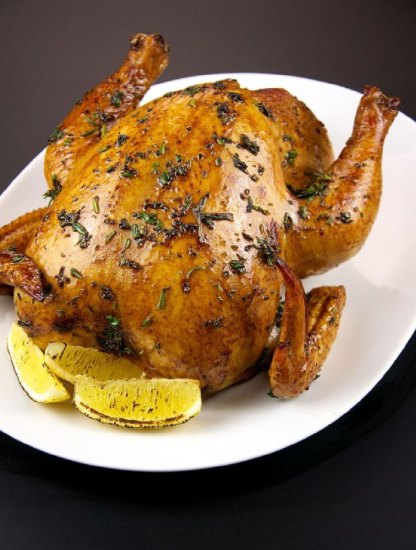
Whole Roasted Chicken. culinarygeek.net
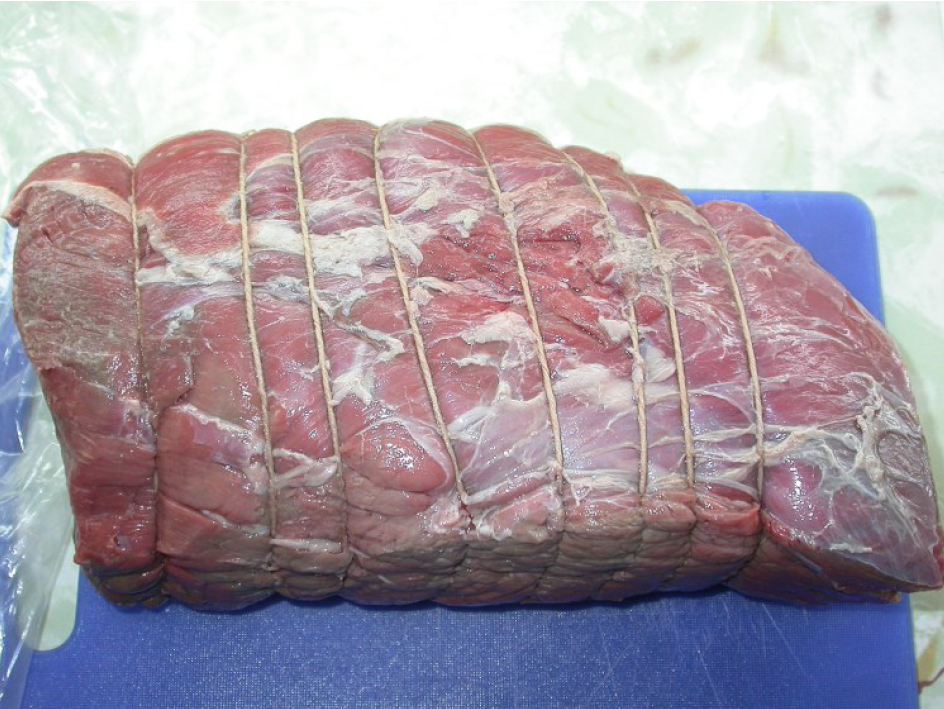
Prepped Beef Top Round for Roasting. Wikipedia, CCA – 3.0
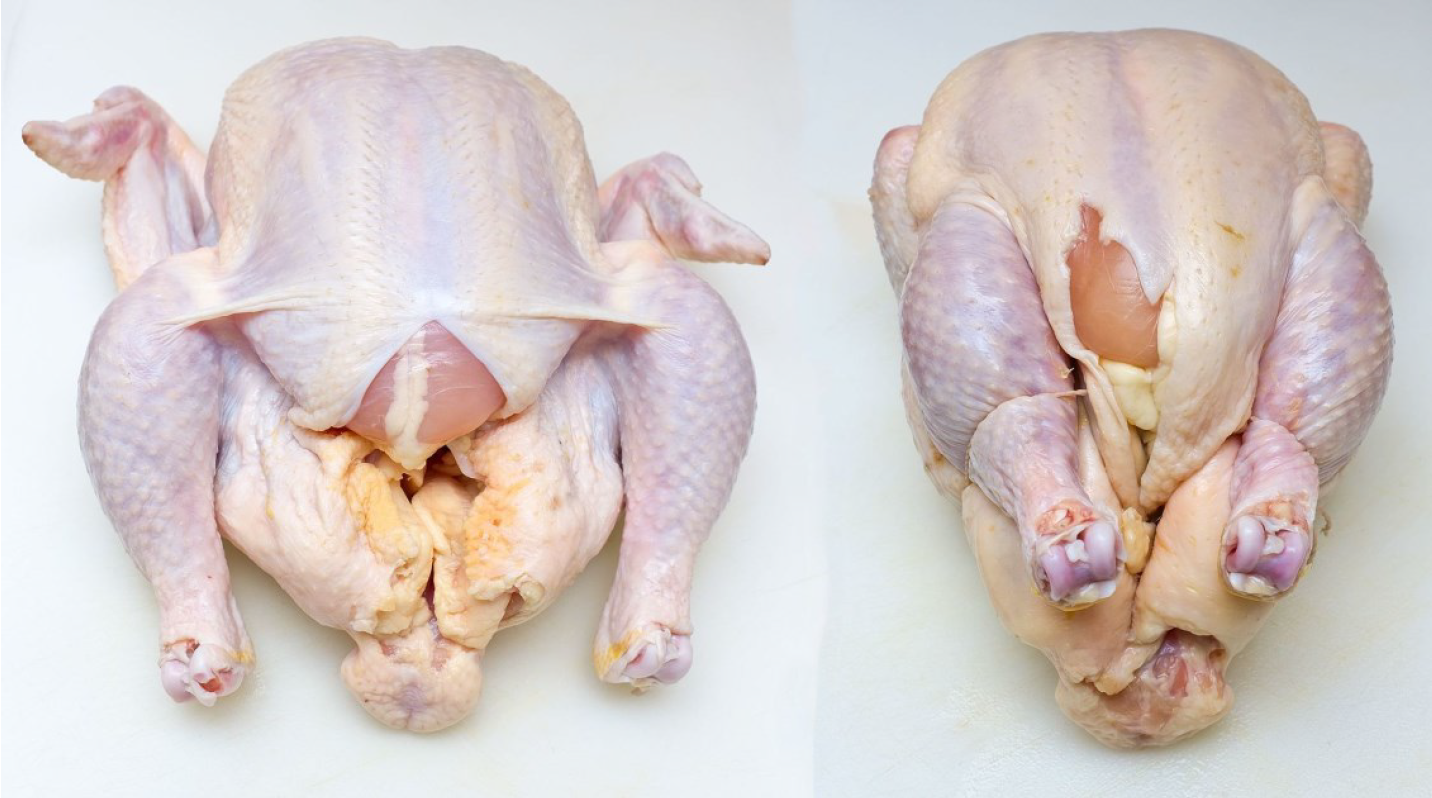
Untrussed and Trussed Chicken for Roasting CCO 1.0 UPDD
Broiling:
To broil food means to expose it to a high heat source from above. Broiling is often a quick process and if you have ever broiled anything in your home over you know that food can go from golden brown to burnt in a matter of seconds. That is why broiling is often a final step in the cooking process, following baking or roasting, for the purpose of adding color and flavor.
Temperature for this cooking method is controlled by the movement of the oven racks closer or further away from the heat source. In the image below, the heat coils can be seen at the top of the oven. The racks inside the oven are moveable and for higher temperatures the racks can be moved to a higher setting and for lower temperature cooking the racks can be moved further from the heat source.
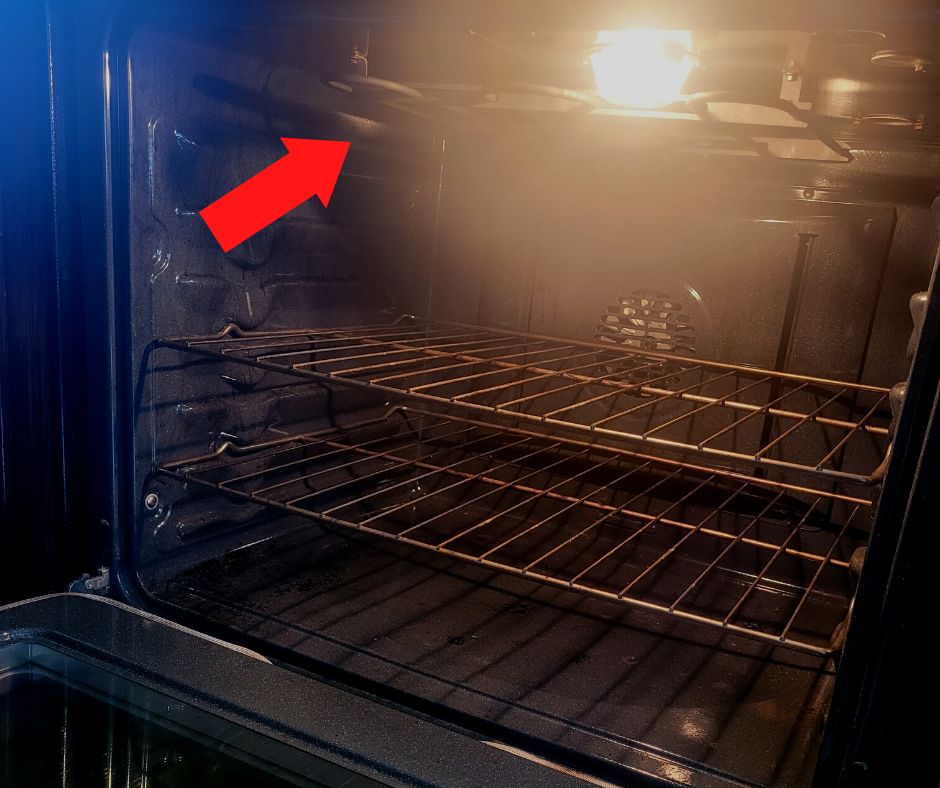.jpg?revision=1&size=bestfit&width=509&height=427)
Grilling:
Grilling food can be thought of broiling in reverse. In the case of broiling, there is an intensely high heat coming from above. In grilling, the heat source is coming from below. Grilling can happen over open flame, a rack, or even on a flat surface of a stove
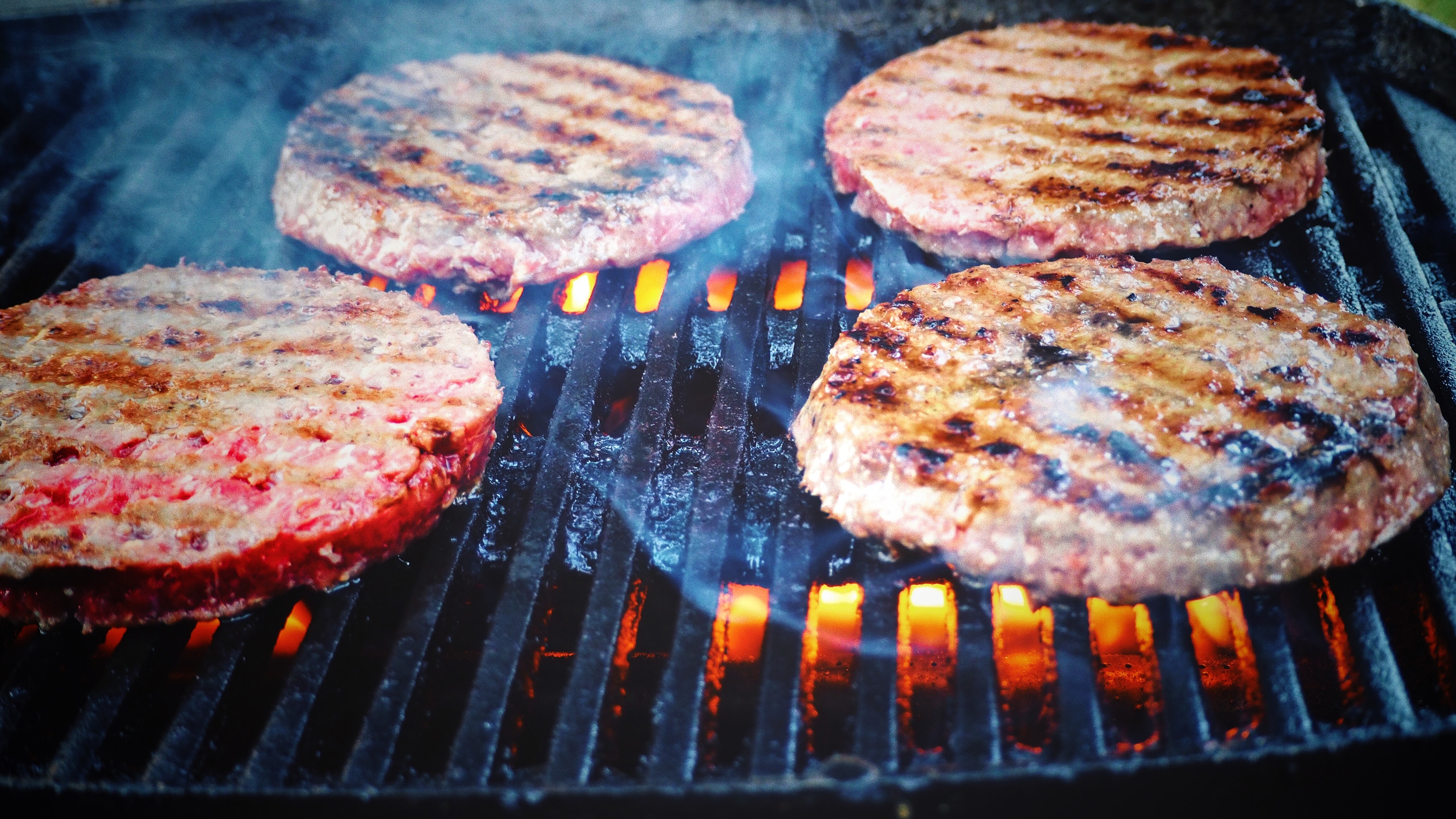
Burgers being cooked on grill. Photo courtesy of Jens Mahnke on Pexels
Barbecuing
Barbecuing and grilling are terms that are often used interchangeably; however, they are not the same. Grilling is cooking food over a high heat from below and is often what comes to mind for "back yard bbqs".
Barbecueing uses the same heating method however, is a slow process and is typically a term reserved for slow cooking meats that have been marinated in herbs and spices or covered in a sauce. The cooking process can be slowed or hastened by the movement of meats closer or further away from the heat source.
Additional flavor is added by choice of heat source fuel either charcoal, wood, gas, ect. . .
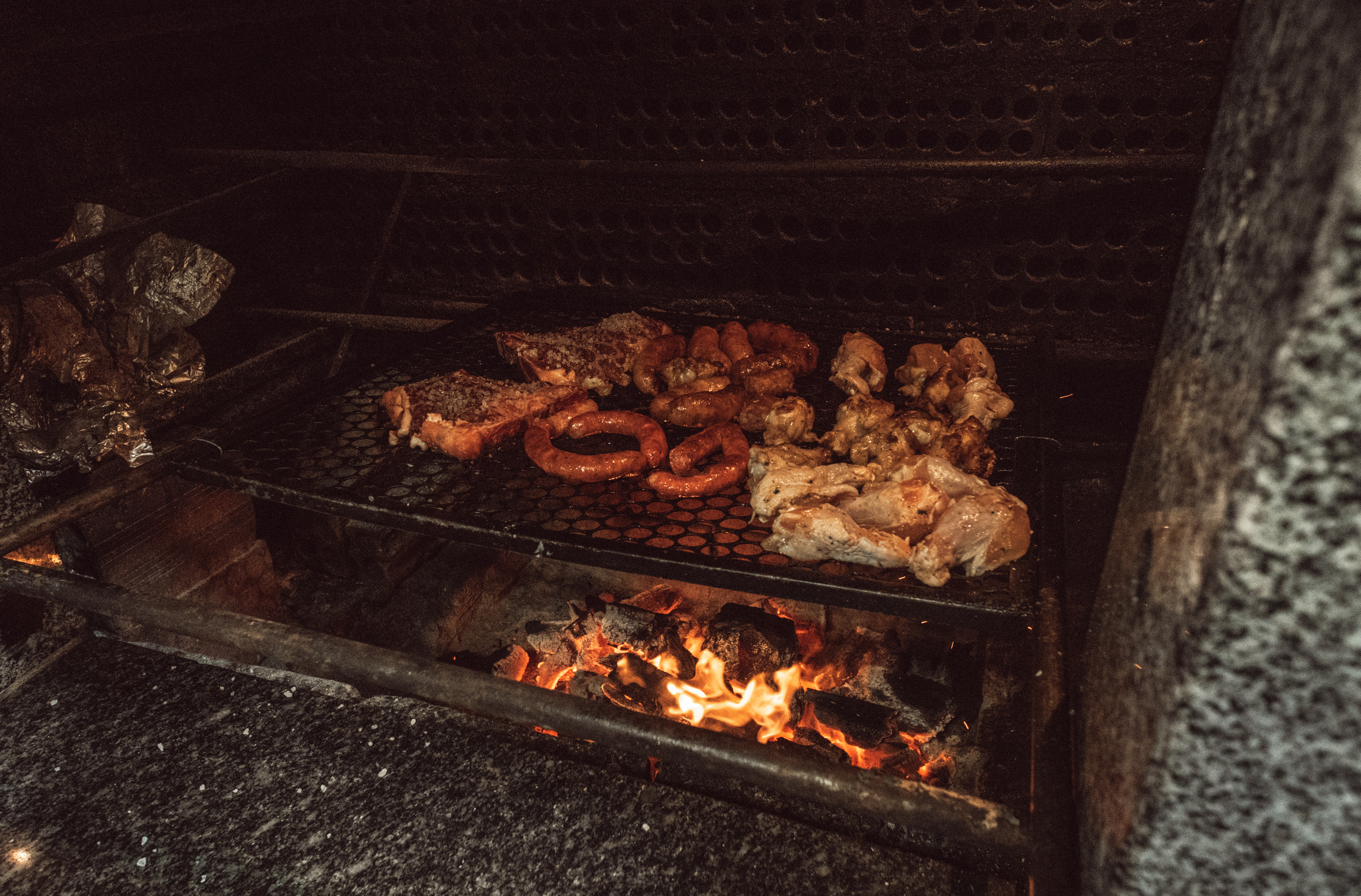
Example of barbecue pit Photo courtesy of Everson Mayer on Pexels
Frying:
Frying is the process of cooking a food in fat. Oil in cooking adds flavor, prevents sticking, and can contribute to end texture of food. It may be confusing to think of frying as a dry heat method because, oil, after-all is a liquid. However, oil (or pure fat) contains no water and therefore, frying falls within the dry-heat category of food preparation. There are several types of frying:
- sauteing
- stir frying
- pan frying
- deep frying
While all of the above mentioned cooking techniques are types of frying they only differ in the amount of oil used.
Sauteing and stir frying: use the least amount of fat to heat the food and are usually done in a pan or wok. Vegetables are often sauteed or stirfried.
Pan frying: As the name states this method is to fry food in a pan. This method uses a moderate amount of fat usually described as "enough to coat bottom of pan" or up to 1/2 inch thick depending on type of food being pan-fried.
Deep frying: Deep frying is what often comes to mind first when someone thinks about fried food. Food that is deep fried is cooked by being fully submerged in cooking oil either in a large pot or in a commercial fryer that utilizes a basket.
Deep fried foods are generally coated in some sort of breading before being submerged into the cooking oil. This technique adds flavor and helps the food retain the moisture as well as adding texture and crispiness.
Frying food occurs at high temperatures so ensuring that you are using the correct oil is important. Smoke point refers to the temperature at which a fat will begin to smoke. This concept will be discussed further in later sections but here is a brief introduction to the concept:
.png?revision=1)
Baking:
Baking refers to the cooking of food through the movement of hot air in an oven. Typical baking temperature is around 350˚F, but baking can occur at slightly lower and higher temperatures.
The end result can be affected by the placement of the rack within the oven and the color of the pan used to bake the food. The center rack is the recommended location for the best results using this cooking method. This is because baking relies on the movement of air and if the rack is in the middle of the oven then there is a sufficient space both above and below for the movement of air. Additionally, over-crowding or stacking pans in the oven on multiple racks can cause food to cook unevenly with some food possibly burning while other pieces of food being undercooked. This again, is due to the limited air flow in the oven.
Pan color can affect the cooking process as well. Shiny pans will reflect heat which will result in lighter color and softer crust (e.g. desired with cookies and cakes). Darker pans absorb heat and will result in an increased amount of browning of the baked foods as well as a crispier crust. (e.g. desired with breads and pies)
Checking on baked foods is often required due to the many factors that affect the process of baking. However, frequent checking can result in reduced oven temperatures which can also alter the cooking time and end result of the food.
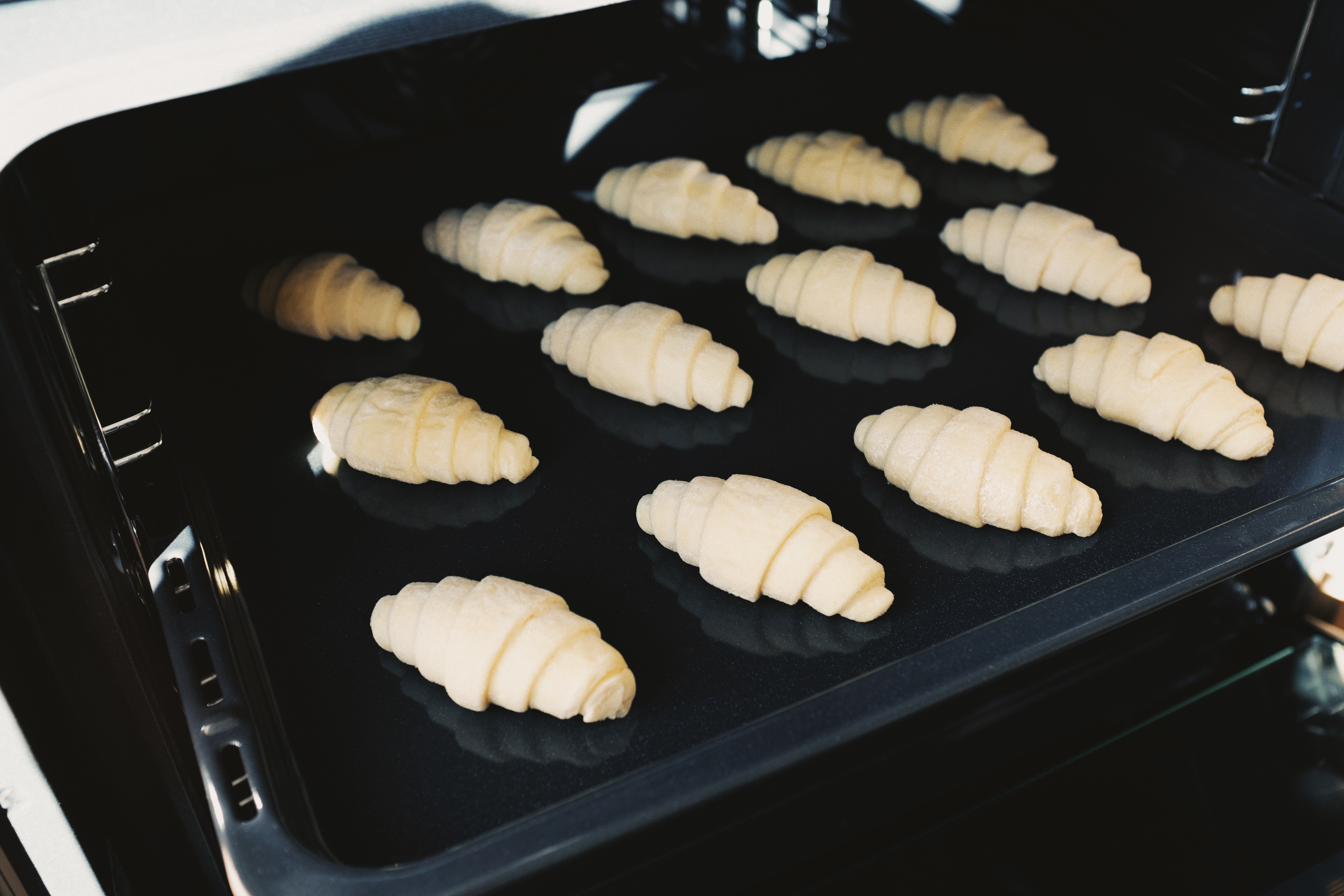
Cooking crecent rolls on dark sheet pan Photo courtesy of Ready Made on Pexels
Source: Brown. A. (2011). Understanding food principles and preparation 4th ed. Cengage Learning.


